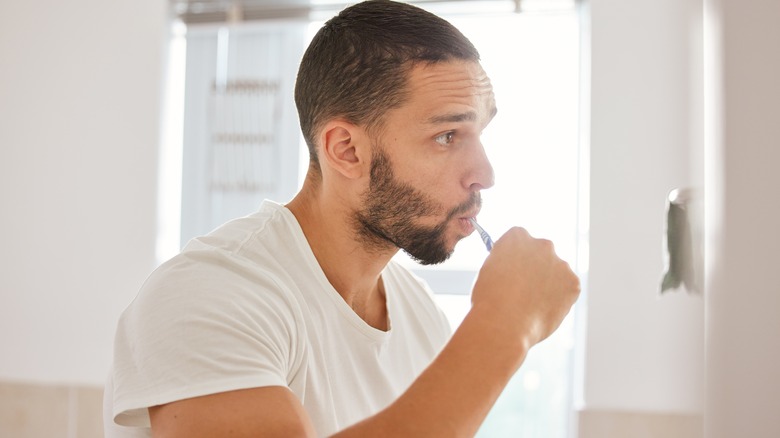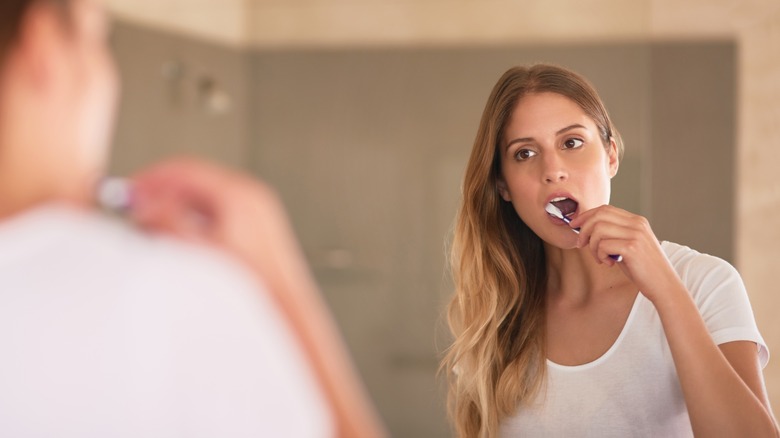The Proper Way To Brush Your Teeth
We all know the importance of brushing our teeth, but it can be easy to zone out and not pay attention to how well we are cleaning them. The truth is, how you brush your teeth plays a vital role in your oral health. Brushing removes acids, plaque, and bacteria that lead to cavities, so making sure you do it right is key to a bright smile, per the American Dental Association (ADA).
Brushing begins with the brush you use, and choosing a brush with softer bristles is better, according to Kimberly Harms, a dentist from Farmington, Minnesota. She told WebMD that softer bristles are more flexible, meaning they can bend and reach under the gum line to remove plaque easier than hard bristles. The ADA also recommends buying a toothpaste that contains fluoride. Fluoride helps to build strong teeth, and it protects the enamel from acids in your mouth.
Take your time when brushing your teeth
The first step in brushing your teeth properly is making sure you get the outer surfaces of your teeth. To avoid gaps, go over each tooth individually. Then, brush the outside of your teeth, holding your toothbrush at a 45-degree angle. Gently rub the edge of your gum line to brush away bits of food and plaque (per Colgate). Brushing your teeth too hard can cause abrasion and sensitivity.
Once you've brushed the outer sides of your teeth, it's time to move on to the inner surface. You'll want to do this while holding the brush at a 45-degree angle. Next is cleaning the chewing surfaces, or the tops, of your teeth, using short motions that go forward and back. The final step in brushing your teeth is to brush the surface of your tongue, which removes the bacteria that cause bad breath.
While it's good to be enthusiastic about brushing your teeth, you don't need to brush immediately after a meal. In fact, you should wait at least 15 to 20 minutes after eating before brushing. Waiting those extra minutes gives the saliva time to break down the acids that form in your mouth after you eat, per WebMD.


